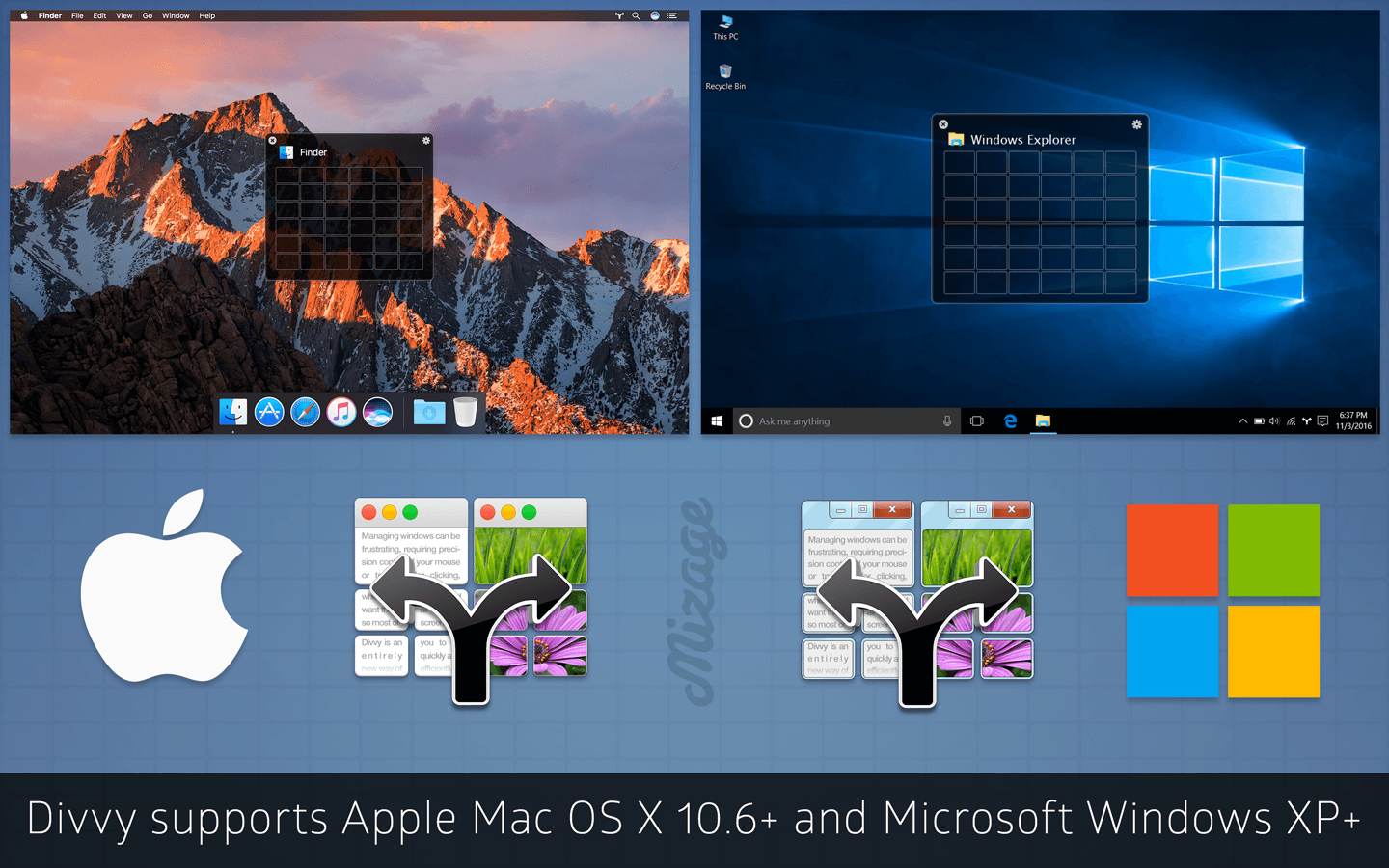Microsoft and Apple are no longer the fierce rivals they used to be and, in fact, the two companies are now even collaborating on a series of projects supposed to make their products work better one with another.
Jun 16, 2020 If you have one of these Mac models using OS X El Capitan 10.11 or later, you don't need a USB flash drive to install Windows: MacBook introduced in 2015 or later MacBook Air introduced in 2017 or later 3. Sep 27, 2007. Seamless Use Windows side-by-side with macOS (no restarting required) on your MacBook ®, MacBook Pro, iMac ®, iMac Pro, Mac mini ® or Mac Pro ®.Share files and folders, copy and paste images and text & drag and drop files between Mac and Windows applications. Easy Set-Up Parallels Desktop automatically detects what you need to get started so you are up and going within minutes! Feb 11, 2020.
But there was a time when many considered Microsoft and Apple the biggest enemies in the tech industry, not only because of the history between the two, but also as a result of the competing products they launched.

And yet, Microsoft somehow managed to expand in Apple’s walled garden, making its software available for Mac OS X users at a time when pretty much every fanboy of the Cupertino-based tech giant hated the software firm with all their guts.
It all started in 1997 at Apple’s MacWorld conference in Boston when Steve Jobs made a surprise announcement and Bill Gates himself took the stage to discuss Microsoft’s plans for Mac OS X.
It was something nobody would have ever imagined happening, but which Apple really needed due to its financial trouble. With a low stock price and struggling financially, Apple appointed Steve Jobs as an interim CEO in an attempt to save the company.
And the solution he found, and which he announced at MacWorld, was a partnership with Microsoft that allowed the software firm to expand in the world on Mac OS X quite substantially.
First of all, according to the partnership between the two, Internet Explorer became the default browser on the Macintosh.
“We have taken a look at browsers out there and Apple has decided to make Internet Explorer its default browser on the Macintosh. Since we believe in choice, we’re going to be shipping other Internet browsers, as well, on the Macintosh, and the user can, of course, change their default should they choose to. We believe that Internet Explorer is a really good browser, and we think it’s going to make a fine default browser,” Steve Jobs told the audience in this surprise announcement.
Then, a dedicated version of Microsoft Office for Mac OS X was also offered to Apple users as part of a five-year collaboration.
What Microsoft had to do in return was make a $150 million investment in Apple, which essentially allowed the company to avoid the financial collapse.
“Microsoft is making an investment in Apple. Microsoft is buying $150 million worth of Apple stock at market price. It is non-voting shares. And they’ve agreed not to sell them for at least three years. So what this means is that Microsoft is going to be part of the game with us as we restore this company back to health, have a vested interest in that stock price going up,” Jobs told the audience.
Microsoft and Apple also settled their patent dispute and received a full cross-license for all patents.
It goes without saying that Microsoft was the big winner of the deal, especially as it was the world’s largest software company that also wanted a piece of Apple’s pie.
Internet Explorer landed on Macintosh computers in 1996 with version 2 of the browser. However, Microsoft’s browser became the default option as part of Mac OS 8.1 announced at MacWorld in 1998 – the operating system, however, shipped with Internet Explorer 3.01, despite version 4.0 already available at that time; this was necessary because the latest IE version wasn’t finalized when Apple signed off Mac OS 8.1.

Since then, Microsoft pushed harder and harder for its software on Mac OS X, and new versions of Internet Explorer were released regularly. Internet Explorer 5 landed in January 2020, followed by Internet Explorer 5.1 in September 2001.
The browser partnership between the two came to an end in 2003 when Apple released Mac OS X 10.3 Panther, which shipped with the company’s very own Safari browser. Microsoft eventually abandoned Internet Explorer for Mac in late 2005, while next year it also pulled download links once and for all.
Users who tried to download Internet Explorer after this date were told to try out Apple’s Safari.
How to start up in macOS from Windows
- From the notification area on the right side of the Windows taskbar, click to show hidden icons.
- Click the Boot Camp icon .
- From the menu shown, choose Restart in macOS.
If you haven't installed the latest Boot Camp updates, you might get the message ”Could not locate the OS X boot volume.'
Or use Startup Manager as your Mac starts up:
- Restart your Mac from the Start menu in Windows.
- Press and hold the Option (or Alt) ⌥ key as your Mac begins to restart.
- Select your Mac startup volume (Macintosh HD) in the Startup Manager window, then press Return or click the up arrow:
How to start up in Windows from macOS
- Use Startup Manager to choose your Windows (Boot Camp) volume during startup.
- Or select your Boot Camp volume in Startup Disk preferences, then restart.
Learn more
Difference Between Microsoft Windows Mac Os X And Linux
- If you're having difficulty using VoiceOver or another screen reader to complete these steps, please contact Apple Support.
- Learn how to install Windows 10 on your Mac.




